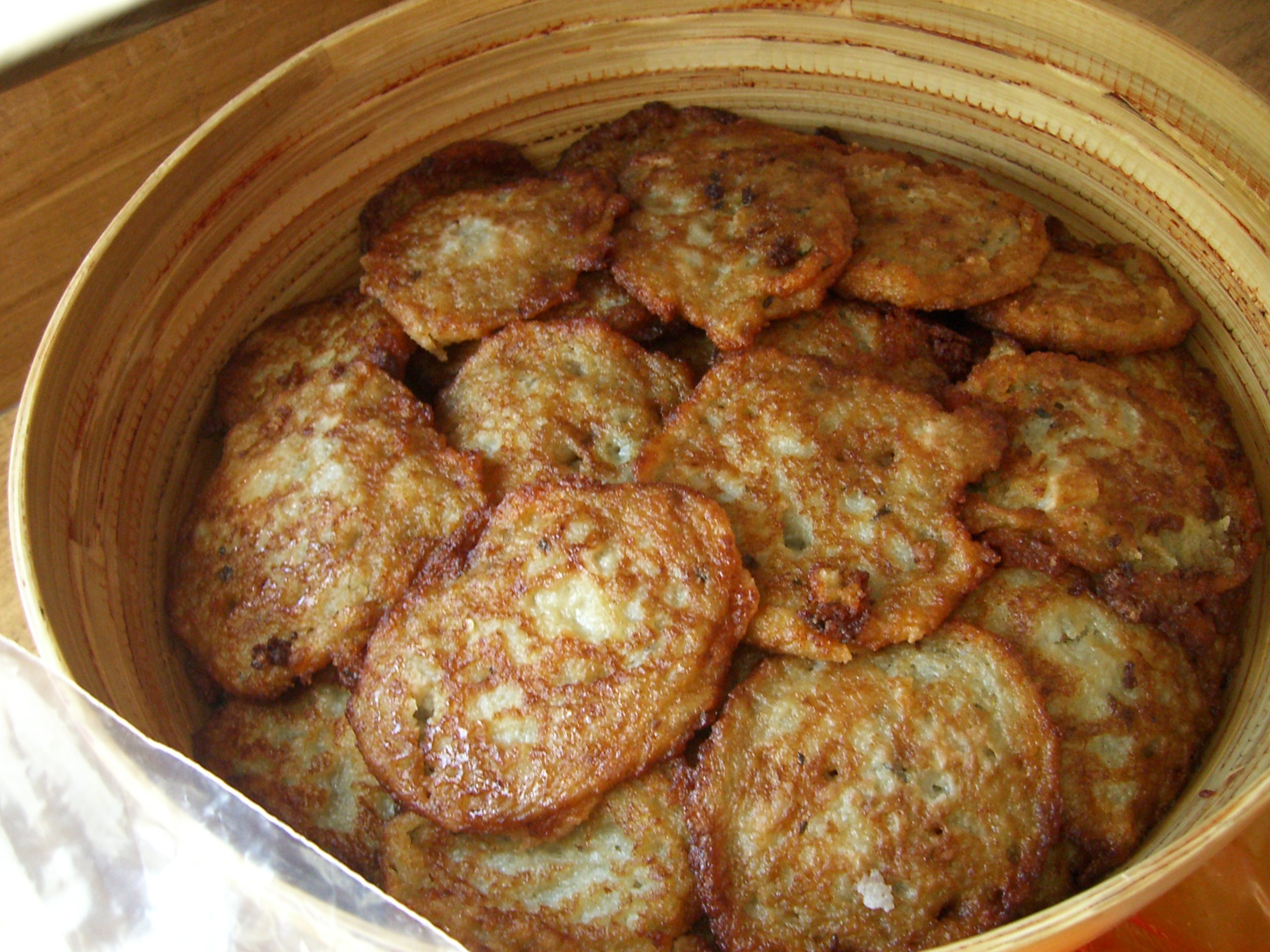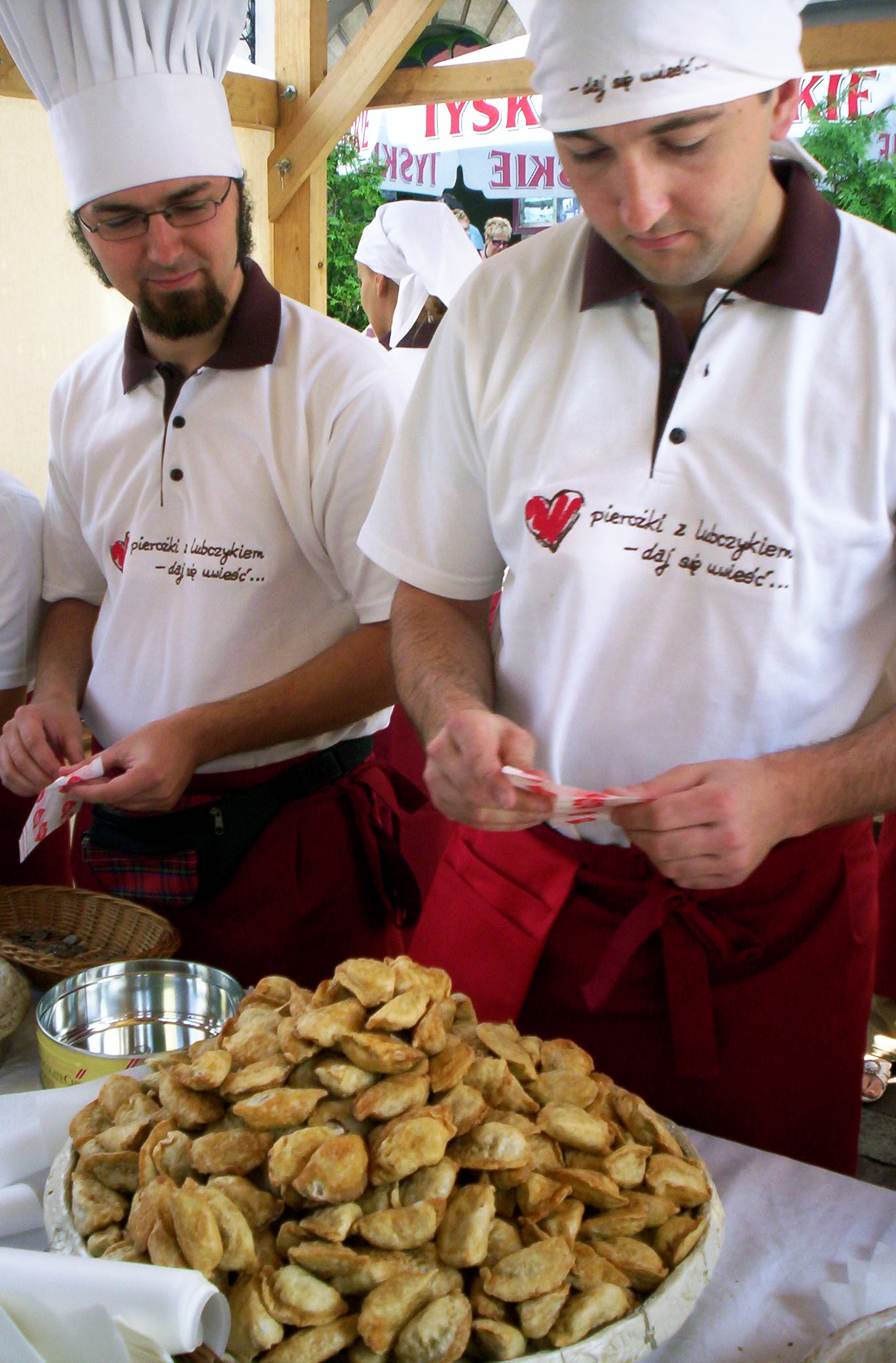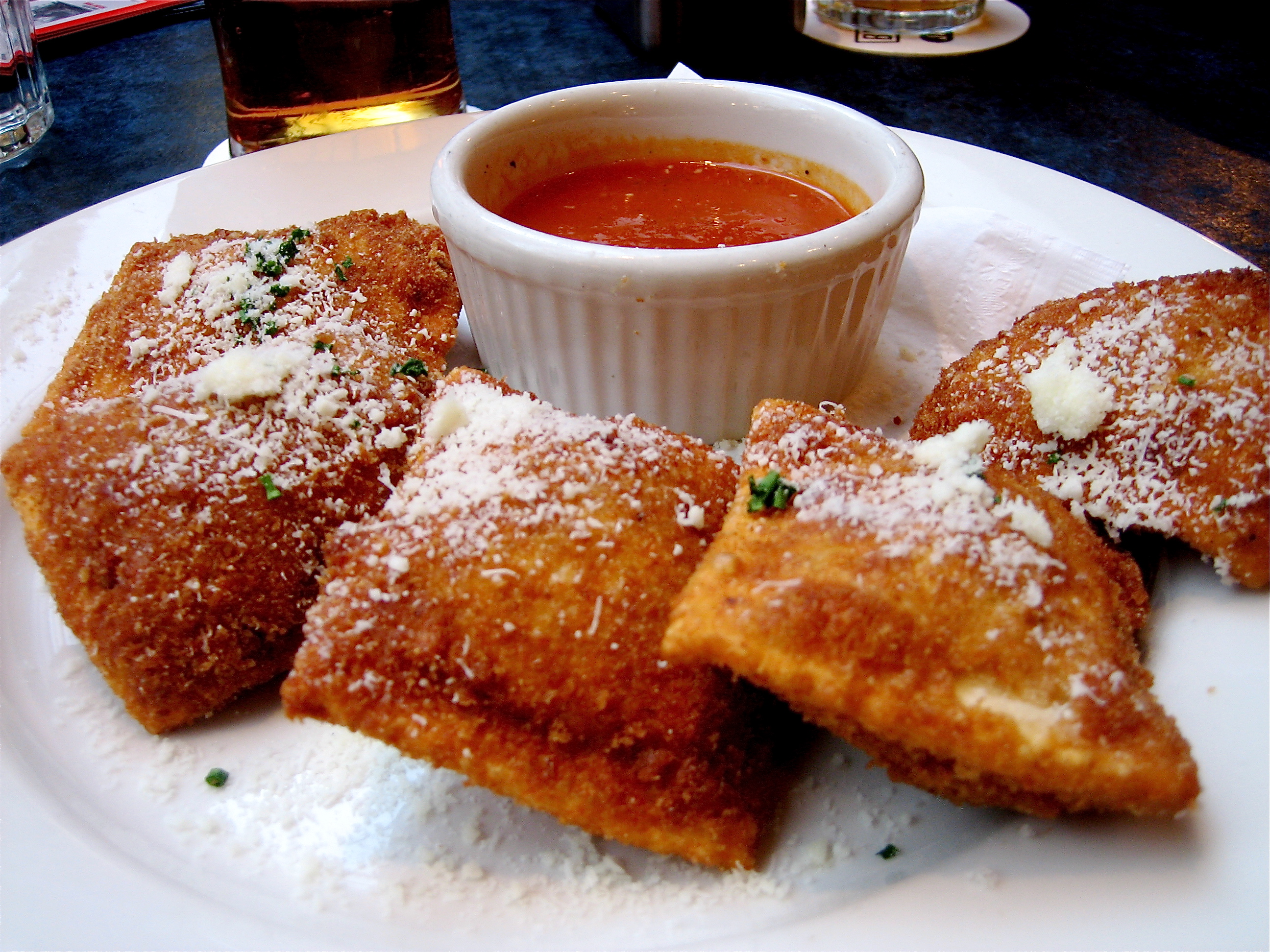|
Kalduny
Kalduny or kolduny ( be, калдуны́, pl, kołduny, lt, koldūnai) are stuffed dumplings made of unleavened dough in Belarusian, Lithuanian, and Polish cuisines, akin to the Polish pierogi, Russian pelmeni and the Ukrainian vareniki. In Slavic languages the word means “ magicians” or “ sorcerers”, but it is unclear how the word became associated with the dish. Description Kalduny, dumplings of unleavened dough filled with meat, mushrooms, or other stuffings, are related to similar dishes in the West and in the East alike, from Italian ravioli, Hungarian derelye, and Ashkenazi Jewish pirogen to Russian pelmeni and Central Asian manti or chuchvara. Kalduny made with a stuffing of smoked ham and mushrooms (''Kalduny Count Tyshkevich'', named after a Belarusian noble family from Lahojsk near Minsk) were long considered Belarus's “visiting card”, although decades of Soviet rule almost erased their trace from public memory and now they are only serv ... [...More Info...] [...Related Items...] OR: [Wikipedia] [Google] [Baidu] |
Vareniki
Pierogi are filled dumplings made by wrapping unleavened dough around a savory or sweet filling and cooking in boiling water. They are often pan-fried before serving. Pierogi or their varieties are associated with the cuisines of Central, Eastern and Southeastern Europe. Dumplings most likely originated in Asia and came to Europe via trade in the Middle Ages. The widely-used English name pierogi was derived from Polish. In some parts of Eastern Europe they are known as varenyky''.'' Pierogi are also popular in modern-day American and Canadian cuisine, where they are sometimes known under different local names. Typical fillings include potato, cheese, quark, sauerkraut, ground meat, edible mushrooms, and/or fruits. Savory pierogi are often served with a topping of sour cream, fried onions, or both. Terminology The English word "pierogi" comes from Polish ' , which is the plural form of ' , a generic term for filled dumplings. It derives from Old East Slavic (') and furth ... [...More Info...] [...Related Items...] OR: [Wikipedia] [Google] [Baidu] |
Belarusian Cuisine
Belarusian cuisine shares many similarities with cuisines of other Eastern, Central and Northeastern European countries, based predominantly on meat and various vegetables typical for the region. History Belarus cuisine has predominantly Slavic roots. Along with a Ruthenian influence, it is also linked with Lithuanian and Polish because of the long intermingling of these three peoples; first within the Grand Duchy of Lithuania (11th-15th centuries) and later within the Polish–Lithuanian Commonwealth (16th-17th centuries). Though the Belarusian nobility, like the Polish elite, borrowed much from Italian, German, and French cuisines, this influence hardly made itself felt in the diet of the peasant majority. Still, some of the borrowed dishes spread throughout the society, such as lazanki (a mixture of flour dumplings and stewed meat, related to Italian lasagna) and, above all, various dishes made of grated potatoes, typical for German cuisine. The political upheavals ... [...More Info...] [...Related Items...] OR: [Wikipedia] [Google] [Baidu] |
Dumpling
Dumpling is a broad class of dishes that consist of pieces of dough (made from a variety of starch sources), oftentimes wrapped around a filling. The dough can be based on bread, flour, buckwheat or potatoes, and may be filled with meat, fish, tofu, cheese, vegetables, fruits or sweets. Dumplings may be prepared using a variety of methods, including baking, boiling, frying, simmering or steaming and are found in many world cuisines. In the United States in May 2015 National Day Calendar listed National Dumpling Day as held on September 26, annually. African Banku and kenkey are defined as dumplings in that they are starchy balls of dough that are steamed. They are formed from fermented cornmeal. Banku is boiled and requires continuous kneading, while kenkey is partly boiled then finished by steaming in corn or banana leaves. Tihlo—prepared from roasted barley flour—originated in the Tigray region of Ethiopia and is now very popular in Amhara as well and ... [...More Info...] [...Related Items...] OR: [Wikipedia] [Google] [Baidu] |
Pierogi
Pierogi are filled dumplings made by wrapping unleavened dough around a savory or sweet filling and cooking in boiling water. They are often pan-fried before serving. Pierogi or their varieties are associated with the cuisines of Central, Eastern and Southeastern Europe. Dumplings most likely originated in Asia and came to Europe via trade in the Middle Ages. The widely-used English name pierogi was derived from Polish. In some parts of Eastern Europe they are known as varenyky''.'' Pierogi are also popular in modern-day American and Canadian cuisine, where they are sometimes known under different local names. Typical fillings include potato, cheese, quark, sauerkraut, ground meat, edible mushrooms, and/or fruits. Savory pierogi are often served with a topping of sour cream, fried onions, or both. Terminology The English word "pierogi" comes from Polish ' , which is the plural form of ' , a generic term for filled dumplings. It derives from Old East Slavic (') and f ... [...More Info...] [...Related Items...] OR: [Wikipedia] [Google] [Baidu] |
Polish Cuisine
Polish cuisine ( pl, kuchnia polska) is a style of cooking and food preparation originating in or widely popular in Poland. Due to Poland's history, Polish cuisine has evolved over the centuries to be very eclectic, and it shares many similarities with other regional cuisines. Polish-styled cooking in other cultures is often referred to as ''à la polonaise''. Polish cuisine is rich in meat, especially pork, chicken and game, in addition to a wide range of vegetables, spices, mushrooms, and herbs. Polish Meals – Polish Food – Polish Cuisine . Retrieved 6 June 2011. It is also characteristic in its use of various kinds of noodles, cereals, and [...More Info...] [...Related Items...] OR: [Wikipedia] [Google] [Baidu] |
Dumpling
Dumpling is a broad class of dishes that consist of pieces of dough (made from a variety of starch sources), oftentimes wrapped around a filling. The dough can be based on bread, flour, buckwheat or potatoes, and may be filled with meat, fish, tofu, cheese, vegetables, fruits or sweets. Dumplings may be prepared using a variety of methods, including baking, boiling, frying, simmering or steaming and are found in many world cuisines. In the United States in May 2015 National Day Calendar listed National Dumpling Day as held on September 26, annually. African Banku and kenkey are defined as dumplings in that they are starchy balls of dough that are steamed. They are formed from fermented cornmeal. Banku is boiled and requires continuous kneading, while kenkey is partly boiled then finished by steaming in corn or banana leaves. Tihlo—prepared from roasted barley flour—originated in the Tigray region of Ethiopia and is now very popular in Amhara as well and ... [...More Info...] [...Related Items...] OR: [Wikipedia] [Google] [Baidu] |
Pierogi
Pierogi are filled dumplings made by wrapping unleavened dough around a savory or sweet filling and cooking in boiling water. They are often pan-fried before serving. Pierogi or their varieties are associated with the cuisines of Central, Eastern and Southeastern Europe. Dumplings most likely originated in Asia and came to Europe via trade in the Middle Ages. The widely-used English name pierogi was derived from Polish. In some parts of Eastern Europe they are known as varenyky''.'' Pierogi are also popular in modern-day American and Canadian cuisine, where they are sometimes known under different local names. Typical fillings include potato, cheese, quark, sauerkraut, ground meat, edible mushrooms, and/or fruits. Savory pierogi are often served with a topping of sour cream, fried onions, or both. Terminology The English word "pierogi" comes from Polish ' , which is the plural form of ' , a generic term for filled dumplings. It derives from Old East Slavic (') and f ... [...More Info...] [...Related Items...] OR: [Wikipedia] [Google] [Baidu] |
Ravioli
Ravioli (; singular: ''raviolo'', ) are a type of pasta comprising a filling enveloped in thin pasta dough. Usually served in broth or with a sauce, they originated as a traditional food in Italian cuisine. Ravioli are commonly square, though other forms are also used, including circular and semi-circular ( mezzelune). The word 'ravioli' means "little turnips" in Italian dialect, from the Italian ''rava'' meaning turnips, from the Latin ''rapa''. History The earliest known mention of ravioli appears in the personal letters of Francesco di Marco Datini, a merchant of Prato in the 14th century.Davidson ''Oxford Companion to Food'', p. 655. In Venice, the mid-14th-century manuscript ''Libro per cuoco'' offers ravioli of green herbs blanched and minced, mixed with beaten egg and fresh cheese, simmered in broth and seasoned with "sweet and strong spices". In Rome, ravioli were already well known when Bartolomeo Scappi served them with boiled chicken to the papal conclave ... [...More Info...] [...Related Items...] OR: [Wikipedia] [Google] [Baidu] |
Italian Cuisine
Italian cuisine (, ) is a Mediterranean cuisine#CITEREFDavid1988, David 1988, Introduction, pp.101–103 consisting of the ingredients, recipes and List of cooking techniques, cooking techniques developed across the Italian Peninsula and later spread around the world together with waves of Italian diaspora. Some of these foods were imported from other cultures. Significant changes Columbian Exchange, occurred with the colonization of the Americas and the introduction of potatoes, tomatoes, capsicums, maize and sugar beet — the latter introduced in quantity in the 18th century. It is one of the best-known and most appreciated Gastronomy, gastronomies worldwide. Italian cuisine includes deeply rooted traditions common to the whole country, as well as all the Regional cuisine, regional gastronomies, different from each other, especially between Northern Italy, the north, Central Italy, the centre and Southern Italy, the south of Italy, which are in continuous exchange. Many di ... [...More Info...] [...Related Items...] OR: [Wikipedia] [Google] [Baidu] |
Sorcerer (person)
A magician, also known as an enchanter/enchantress, mage, magic-user, archmage, sorcerer/sorceress, spell-caster, warlock, witch, or wizard, is someone who uses or practices magic derived from supernatural, occult, or arcane sources. Magicians are common figures in works of fantasy, such as fantasy literature and role-playing games, and enjoy a rich history in mythology, legends, fiction, and folklore. Character archetypes In medieval chivalric romance, the wizard often appears as a wise old man and acts as a mentor, with Merlin from the ''King Arthur'' stories being a prime example. Wizards such as Gandalf in ''The Lord of the Rings'' and Albus Dumbledore from ''Harry Potter'' are also featured as mentors, and Merlin remains prominent as both an educative force and mentor in modern works of Arthuriana. Other magicians, such as Saruman from ''The Lord of the Rings'' or Lord Voldemort from ''Harry Potter'', can appear as hostile villains. Villainous sorcerers were so crucial ... [...More Info...] [...Related Items...] OR: [Wikipedia] [Google] [Baidu] |
Hungarian Cuisine
Hungarian or Magyar cuisine is the cuisine characteristic of the nation of Hungary and its primary ethnic group, the Magyars. Traditional Hungarian dishes are primarily based on meats, seasonal vegetables, fruits, bread, and dairy products. General features Hungarian cuisine is mostly continental Central European, with some elements from Eastern Europe such as the use of poppy, and the popularity of kefir and quark. Paprika is often associated with Hungary and is used prominently in several dishes. Traditional Hungarian paprika is characterised by its bright colour and distinct heat, differentiating it from milder variations of paprika popular elsewhere in the world. Other herbs and spices commonly used in Hungarian cuisine include garlic, marjoram, caraway seeds, celery seeds and dill seeds. Typical Hungarian food is heavy on dairy and meats, similar to that of neighboring Czech, and Slovak cuisines. Chicken, pork and beef are common, while turkey, duck, lamb, fis ... [...More Info...] [...Related Items...] OR: [Wikipedia] [Google] [Baidu] |





.jpg)
